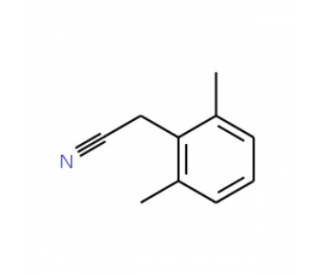詳細(xì)說(shuō)明
Purity
>90%, by SDS-PAGE under reducing conditions and visualized by silver stain.
Endotoxin Level
<0.01 EU per 1 μg of the protein by the LAL method.
Activity
Measured by its ability to inhibit JE-induced chemotaxis of BaF3 mouse pro?B cells transfected with human CCR2A. The ED 50 for this effect is 0.1-0.5 μg/mL in the presence of 20 ng/mL of recombinant mouse JE.
Source
Spodoptera frugiperda, Sf 21 (baculovirus)-derived
Viral CCI
(Met17-Val258)&
(Pro18-Val258)
Accession # P19063IEGRMD Human IgG1
(Pro100-Lys330)6-His tag N-terminus C-terminus Accession #
N-terminal Sequence
AnalysisMet17 & Pro18
Structure / Form
Disulfide-linked homodimer
Predicted Molecular Mass
57 kDa (monomer)
696-CC |
| |
Formulation Lyophilized from a 0.2 μm filtered solution in PBS. | ||
Reconstitution Reconstitute at 100 μg/mL in sterile PBS. | ||
Shipping The product is shipped at ambient temperature. Upon receipt, store it immediately at the temperature recommended below. | ||
Stability & Storage: Use a manual defrost freezer and avoid repeated freeze-thaw cycles.
|
Data Images
Bioactivity
| The new protein (Catalog # |
Bioactivity
| Recombinant Viral CCI Fc Chimera (Catalog # 696-CC) inhibits Recombinant Mouse CCL2/JE/MCP-1 (Catalog # ) induced chemotaxis of BaF3 mouse pro-B cells transfected with human CCR2A. The ED50 for this effect is 0.1-0.5 μg/mL in the presence of 20 ng/mL Recombinant Mouse CCL2/JE/MCP-1. |
Background: CCI
The family of T1/35 kDa proteins are encoded by the '35K' virulence gene of many poxviruses and are secreted from virus-infected cells. These proteins bind
CC-chemokines with high affinity and are termed viral chemokine inhibitor (vCCI). Viral CCI from various poxviruses share multiple stretches of sequence identity and eight conserved cysteine residues (1). The vaccinia virus (strain Lister) vCCI cDNA encodes a 258 amino acid (aa) protein with a putative 17 aa signal peptide (2). Vaccinia virus (strain Lister) vCCI shows greater than 90% aa sequence identity with vCCI from other orthopoxviruses and approximately 40% aa sequence identity with the leporipoxvirus T-1 proteins. vCCI binds with high affinity to many human, mouse, and rat CC-chemokines (1, 3-5). It binds to the same surfaces of these chemokines that are involved in chemokine receptor interactions (4-7). Some CC-chemokines utilize common binding surfaces on vCCI, while others interact with distinct sites on vCCI (8). vCCI inhibits CC-chemokine induced monocyte chemotaxis in vitro but does not block cellular effects induced by CXCL5/ENA-78, CXCL8/IL-8, or CXCL10/IP-10 (3-5). In vivo, vCCI restricts the infiltration of immune cells into sites of inflammation (3, 9, 10) and also the CC-chemokine induced migration of arterial vascular smooth muscle cells (11).
References:
Graham, K.A. et al. (1997) Virology 229:12.
Patel, A.H. et al. (1990) J. Gen. Virol. 71:2013.
Buatois, V. et al. (2010) J. Immunol. 185:2544.
Smith, C.A. et al. (1997) Virology 236:316.
Lalani, A.S. et al. (1998) Virology 250:173.
Beck, C.G. et al. (2001) J. Biol. Chem. 276:43270.
Seet, B.T. et al. (2001) Proc. Natl. Acad. Sci. 98:9008.
Burns, J.M. et al. (2002) J. Biol. Chem. 277:2785.
Dabbagh, K. et al. (2000) J. Immunol. 165:3418.
Reading, P.C. et al. (2003) J. Immunol. 170:1435.
Spinetti, G. et al. (2004) Arterioscler. Throm. Vasc. Biol. 24:1397.
Long Name:
CC Chemokine Inhibitor
Alternate Names:
CCI











 粵公網(wǎng)安備44196802000105號(hào)
粵公網(wǎng)安備44196802000105號(hào)